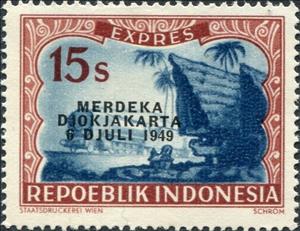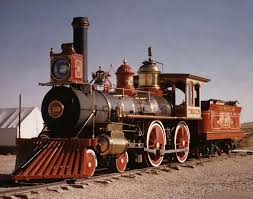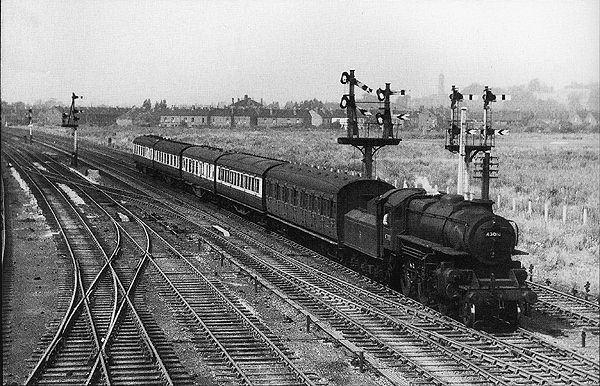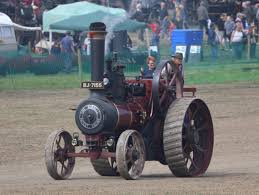Stamp: Locomotive and batak house (Indonesia 1949)
Locomotive and batak house (Indonesia 1949)
01 January (Indonesia ) within release Liberation of Yogyakarta goes into circulation Stamp Locomotive and batak house face value 15 Indonesian sen
| Stamp Locomotive and batak house in catalogues | |
|---|---|
| Michel: | Mi: ID L123 |
Stamp is square format.
Overprint on Mi:ID L26Also in the issue Liberation of Yogyakarta:
- Stamp - Vienna issues overprinted face value 60;
- Stamp - Woman Dancer face value 50;
- Stamp - Fighting Illiteracy face value 1;
- Stamp - Landscape with palm and water face value 40;
- Stamp - Plane over lakes face value 4½;
- Stamp - Digits in a double-circle, overprinted face value 25;
- Stamp - Soldier on guard face value 1;
- Stamp - Locomotive and batak house face value 15;
Stamp Locomotive and batak house it reflects the thematic directions:
A house is a single-unit residential building. It may range in complexity from a rudimentary hut to a complex structure of wood, masonry, concrete or other material, outfitted with plumbing, electrical, and heating, ventilation, and air conditioning systems. Houses use a range of different roofing systems to keep precipitation such as rain from getting into the dwelling space. Houses generally have doors or locks to secure the dwelling space and protect its inhabitants and contents from burglars or other trespassers. Most conventional modern houses in Western cultures will contain one or more bedrooms and bathrooms, a kitchen or cooking area, and a living room. A house may have a separate dining room, or the eating area may be integrated into the kitchen or another room. Some large houses in North America have a recreation room. In traditional agriculture-oriented societies, domestic animals such as chickens or larger livestock (like cattle) may share part of the house with humans.
A locomotive is a rail transport vehicle that provides the motive power for a train. If a locomotive is capable of carrying a payload, it is usually rather referred to as a multiple unit, motor coach, railcar or power car; the use of these self-propelled vehicles is increasingly common for passenger trains, but rare for freight trains.
Railways - Transportation system made up of metal rails which is designed to allow trains to maneuver on the tracks from one location to the next.
A traction engine is a steam-powered tractor used to move heavy loads on roads, plough ground or to provide power at a chosen location. The name derives from the Latin tractus, meaning 'drawn', since the prime function of any traction engine is to draw a load behind it. They are sometimes called road locomotives to distinguish them from railway locomotives – that is, steam engines that run on rails.




